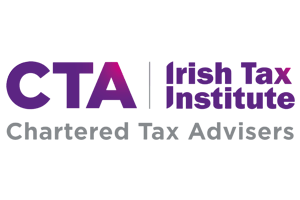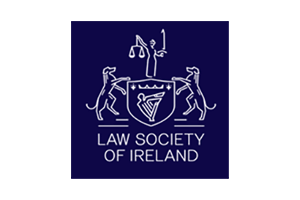Using Your Discretion - The changes to the Discretionary Trust Taxation Regime under s.111 Finance Act 2012
First published Law Society Gazette June 2012
A discretionary trust can be a useful tool in succession planning but it is fraught with dangers from a legal and taxation perspective. The discretionary trust structure in its various forms is used regularly in cases where young children are involved, where a beneficiary has special needs and in some cases as a form of what is colloquially known as asset protection, for example protecting the assets from creditors or estranged spouses. It is also perceived as a structure that can minimise tax.
Recently there has been a significant change to the taxation regime for discretionary trusts. Finance Act 2012 has introduced changes in a reversal of the result of the case of re Irvine . These changes to the taxation position of discretionary trusts do not affect lifetime trusts but only those created under a Will or codicil.
Background to Discretionary Trust Levies
An initial levy of 6% generally arises on the creation of a discretionary trust. An annual levy of 1% arises on 31st December each year after so long as that trust remains discretionary. These levies are collectively also known as ‘Discretionary Trust Tax’. See text box for more general information on taxes and discretionary trusts.
Historical Position
Two significant changes to the treatment of the levies have arisen in recent years; the case of re Irvine and its reversal under s.111 Finance Act 2012.
In the case of re Irvine a Will made provision for the residue of the estate to pass on discretionary trust. The case dealt with the issue of when the initial levy and annual levies were chargeable (as opposed to payable). It was acknowledged by all that the valuation date for the levies was the date of the ascertainment of the residue (thus triggering the calculation and payment date). The Revenue Commissioners argued that the chargeable date was the date of death. Accordingly the annual levies would accumulate from date of death resulting in a number of levies (the initial levy and the accumulated annual levies) being payable within 4 months of the valuation date. However it was successfully argued by the trustees of the trust that, as there were no assets vested in them until the ascertainment of the residue, there was no charge to the initial levy until that date. In accordance with s.20 Capital Acquisitions Tax Consolidation Act 2003 the property was not subject to the discretionary trust until the extent of the residue was ascertained. Therefore the chargeable date for the initial levy was the date of the ascertainment of the residue. Only after that date would the annual levies arise.
The practical effect of this case was that where there was a long administration period in an estate, e.g. where there was litigation in the estate or very complicated assets to deal with resulting in the administration taking a number of years to sort out, the levies would not accumulate. Typically in cases where there was no discretionary trust and the administration of the estate took a number of years, the benefits passing to the residuary beneficiaries might be delayed for CAT purposes as it would not be known for example until the end of the litigation what each beneficiary was to receive. The decision in the Irvine case followed this logic so that, in the case where discretionary trustees took the residuary benefit, in a similar manner they would not be charged with the levies until the ascertainment of that residue.
However s.111 Finance Act 2012 has reversed the effect of the decision in the Irvine case. Now the legislation provides that the date of death is the chargeable date for the initial levy. This will have a significant impact on the management of estates where discretionary trusts are involved.
New Position
Under s.111 Finance Act 2012, which takes effect in relation to deaths arising on or after 8 February 2012 , where a discretionary trust is created under a will (or codicil) of a deceased person, the property is deemed to become subject to the trust at the date of death of the deceased.
In this way the charge arises at the date of death of the deceased, albeit that the valuation date for the payment of the tax remains the same (in the case of trusts of the residue that is usually the date of ascertainment of the residue).
Therefore if it takes a number of years to administer an estate, levies can accumulate during those years, please refer to the example in box. The valuation date is the relevant date for the purposes of calculating the levy. The values at the date of death or each 31st December in the course of the administration are not relevant at that point. The date of death is merely a trigger for the tax while the valuation date is the date used for deciding what is to be taxed and the timing of the payment of the tax.
Revenue have updated their internal guidelines on the effect of s.111 Finance Act 2012 by way of eBrief No.19/12 and practitioners should check www.revenue.ie accordingly.
Tips and Traps
It’s not just about the residue
While s.111 Finance Act 2012 reverses the decision of the Irvine case, which concerned a residue passing to a discretionary trust, the section also applies to all discretionary trusts created under a Will (or codicil). Therefore a specific legacy of assets into a discretionary trust will also be charged with the levy at the date of death and, once the trustees are entitled to retain that legacy, the valuation date will arise.
Warn your executors
Where a discretionary trust is created under a Will or codicil, as practitioners we should ensure that the executors are made aware of the importance of administering the estate in a timely manner to minimise the accumulation of levies.
Warn the trustees
The executors may wish to inform the trustees of the fact that there may be levies accumulating so that the trustees can seek advice on how best to minimise the levies and pay the tax within the short 4 month period post valuation date. It is no longer possible to plan to avoid the initial levy in these cases.
Prior Interests in Possession/Future Trusts
The legislation as drafted appears to capture discretionary trusts that are created under Wills but which are not intended to come into effect until after a prior interest in possession has expired.
For instance if a discretionary trust arises after say a life interest (“to A for life and then to trustees to hold on discretionary trust”), the annual levies would accumulate for the period of the life interest. This could, in the case of a life interest lasting a period of say 25 years, result in the trust being subject to a 30% levy (6% plus 24 x 1%) on the date of death of the life tenant before making any appointments out which in turn would be liable to the additional 30% rate of CAT (total 60% tax).
Revenue have verbally indicated to the author that this was not the intention of the legislation and that this will be clarified in the next Finance Act. Pending this the Revenue manual revised in April 2012 has confirmed that the taxation of such future trusts is not changed by Finance Act 2012. Comfort can be taken from the reference in the manual that no charges to discretionary trust tax arise while a person is beneficially entitled in possession to a limited interest in the trust property.
Four month payment rule still applies for levies
While Finance Act 2010 took away the four month rule for both CAT and the levies and replaced the CAT payment dates to what is now 31 October in each year in respect of valuation dates arising on or before 31 August in that year, the payment date for the levies was removed in 2010 but not replaced until Finance Act 2012. This Act has now restored the four month payment rule so that the levies must be paid within four months of the valuation date, as per the example below.
Refund of part of initial levy within 5 years
The change to the date of charge to the property under Finance Act 2012 affects the refund of half of the initial 6% levy (its reduction to 3%). If a discretionary trust is wound up within 5 years of the initial levy arising, the initial levy is reduced from 6% to 3%.
As the 5 year period starts at the date of death rather than the valuation date, if the valuation date is more than 5 years from the date of death the initial levy cannot be refunded even in the case of a trust being wound up immediately after the date of ascertainment of the residue.
Given that usually the trustees would need to know the level of the funds available to them to determine if they wish to wind up the trust and obtain the refund, this appears harsh and against the spirit of the refund provisions of s18 Capital Acquisitions Tax Consolidation Act 2003. Submissions have been made to Revenue on this point.
Points of interest regarding tax and discretionary trusts
Discretionary trusts are widely defined. Once income is capable of accumulation or if there is discretion retained over who is to benefit from the income and/or capital there is a discretionary trust.
The definition of discretionary trust has been extended under Finance Act 2012 to include entities similar to discretionary trusts, e.g. Jersey foundations, Swiss stiftungs and Liechtensteiner anstalts.
The levies do not arise until there are no principal objects under age 21 in the trust and, in the case of lifetime trusts, the settlor has died.
The trustees are deemed to take an inheritance of the trust assets for the purposes of calculating the levy. Therefore the usual CAT rules (with adjustments) will apply to the inheritance by the trustees.
There are exemptions to the levies under certain conditions.
The annual levies do not arise until the initial levy is chargeable.
The annual levy cannot be charged within 12 months of the initial levy arising.
Distributions from the trust are generally chargeable to CAT even where they are income distributions.
Where income is earned in the trust and it is not distributed within a certain period, a discretionary trust surcharge of 20% is incurred in addition to the standard rate income tax charged.
Capital gains tax can arise within the trust when assets are sold and also when deemed disposals arise on certain events.
Look it Up
s.111 Finance Act 2012
s.15 (as amended) Capital Acquisitions Tax Consolidation Act 2003 – charging provision for discretionary trusts
s.18 Capital Acquisitions Tax Consolidation Act 2003 – computation of tax (including part refund of initial levy)
s.20 Capital Acquisitions Tax Consolidation Act 2003 – charging provision for annual acquisitions by discretionary trusts
s.30 Capital Acquisitions Tax Consolidation Act 2003 – valuation date for tax purposes
Revenue eBrief no19/12 found on www.revenue.ie
Example
Mary dies 10 June 2012 leaving her residuary estate on discretionary trusts. The estate is valued at €800,000 at date of death. There are no principal objects under age 21 or other exemptions. A claim is taken by a child of Mary against the estate under section 117 Succession Act 1965. The claim is settled in January 2015 and the executors finalise the estate appointing €500,000 in value of assets to the trustees to hold on discretionary trust on 3 February 2015. The trustees retain the assets for two more years, appointing them out in full to a child on 5 July 2017. As at December 2015 the trust assets were valued at €550,000 and as at December 2016 the trust assets were valued at €585,000 but were €560,000 at 5 July 2017.
Taxes arising after administration of estate
Valuation date for residue 3 February 2015
Value of assets at that valuation date €500,000
6% of €500,000 initial levy 10/06/12
1% of €500,000 annual levy 31/12/13
1% of €500,000 annual levy 31/12/14
Total 8% of €500,000 (€40,000) payable within 4 months of 3/2/15
Additional taxes
1% of €550,000 annual levy 31/12/15 payable within 4 months of 31/12/15
1% of €585,000 annual levy 31/12/16 payable within 4 months of 31/12/16
CAT on benefit of €560,000 for child payable by 31 October 2017.
No refund of initial levy available as initial levy arises more than 5 years ago (10/6/12-5/7/17).


